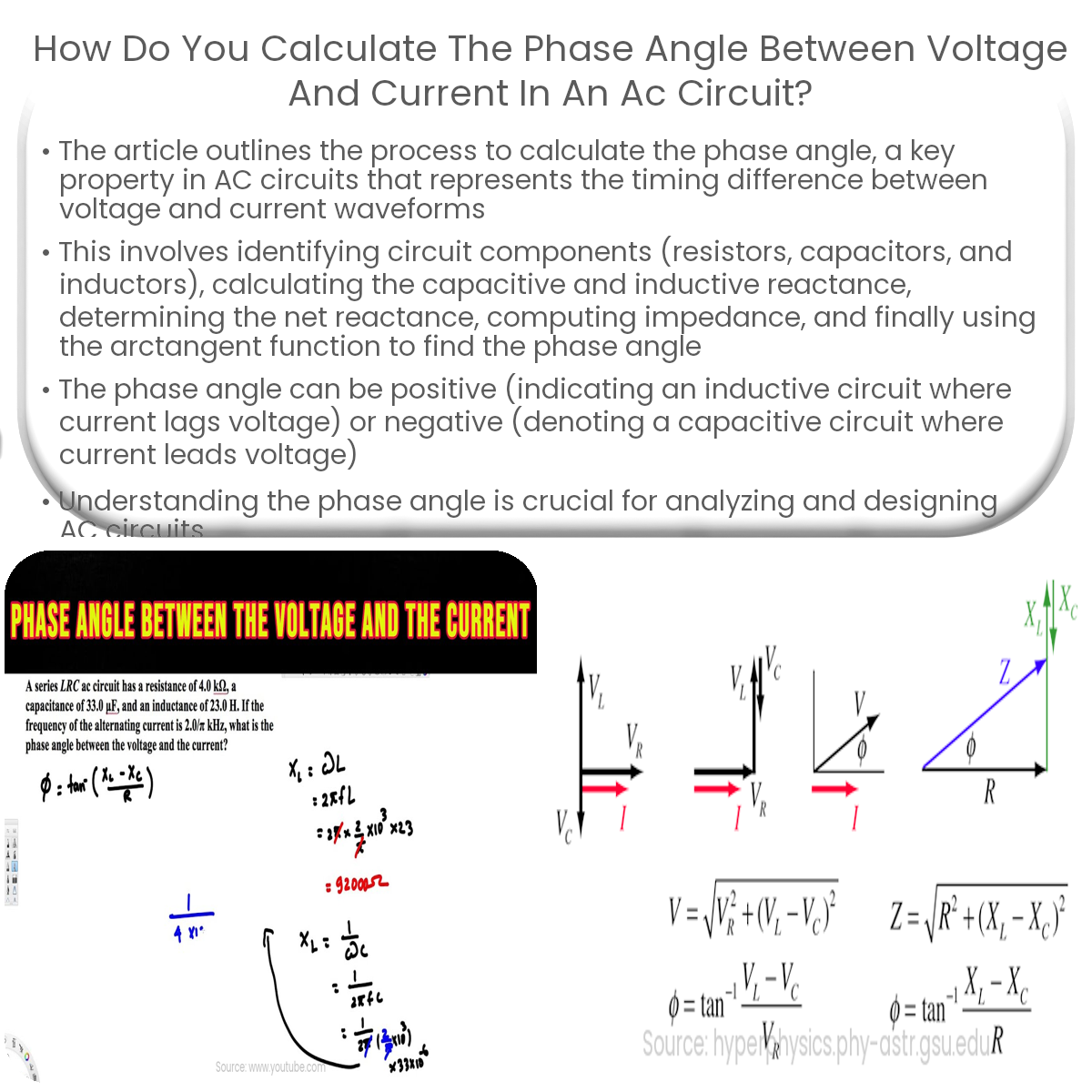Calculate the phase angle in an AC circuit by finding net reactance, impedance, and using the arctangent function: θ = arctan(X / R). Convert to degrees.
Calculating Phase Angle Between Voltage and Current in an AC Circuit
In alternating current (AC) circuits, the phase angle describes the difference in timing between the voltage and current waveforms. This difference occurs due to the presence of reactive components like inductors and capacitors. To calculate the phase angle, follow these steps:
1. Identify Circuit Components
Determine whether the circuit has resistors (R), capacitors (C), and/or inductors (L). These components affect the phase angle in different ways. Resistors have no impact, whereas capacitors cause a phase lag and inductors cause a phase lead.
2. Calculate Capacitive and Inductive Reactance
For capacitors, compute the capacitive reactance (XC) using the formula:
XC = 1 / (2πfC)
For inductors, calculate the inductive reactance (XL) using:
XL = 2πfL
Where f is the frequency of the AC source, C is the capacitance, and L is the inductance.
3. Determine the Net Reactance
Subtract capacitive reactance from inductive reactance to find the net reactance (X):
X = XL – XC
4. Calculate Impedance
Impedance (Z) represents the total opposition to current flow in an AC circuit. Use the Pythagorean theorem to find the impedance:
Z = √(R² + X²)
5. Compute the Phase Angle
Calculate the phase angle (θ) between voltage and current using the arctangent function:
θ = arctan(X / R)
θ is positive if the circuit is inductive and negative if it’s capacitive. The result is in radians; multiply by (180/π) to convert to degrees.
6. Interpret the Phase Angle
A positive phase angle indicates the current waveform lags behind the voltage waveform, which is typical for inductive circuits. A negative phase angle means the current waveform leads the voltage waveform, as seen in capacitive circuits.
In conclusion, calculating the phase angle in an AC circuit involves identifying the components, calculating reactances, finding the net reactance and impedance, and using the arctangent function to obtain the phase angle. This information helps in analyzing and designing AC circuits.


